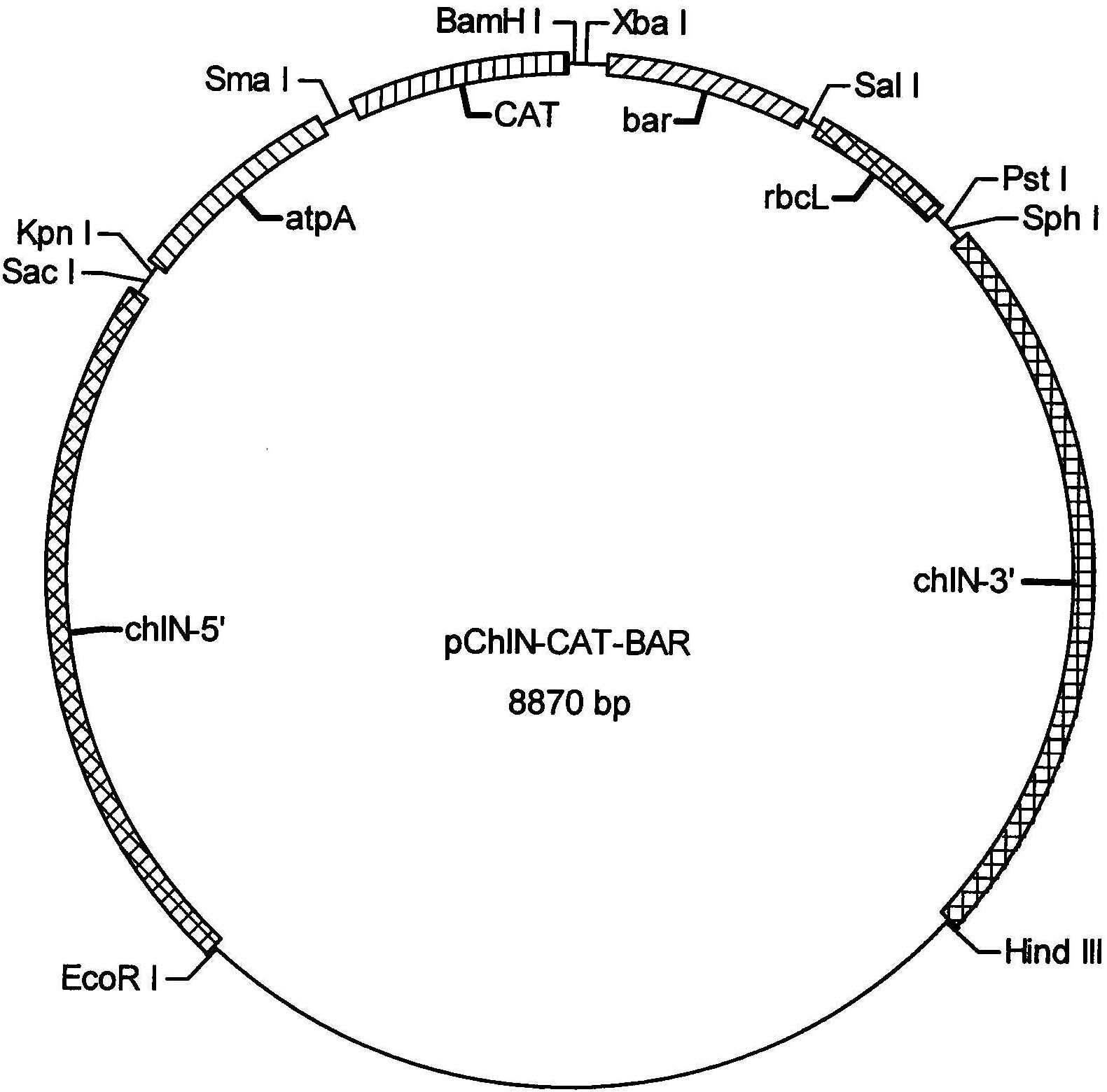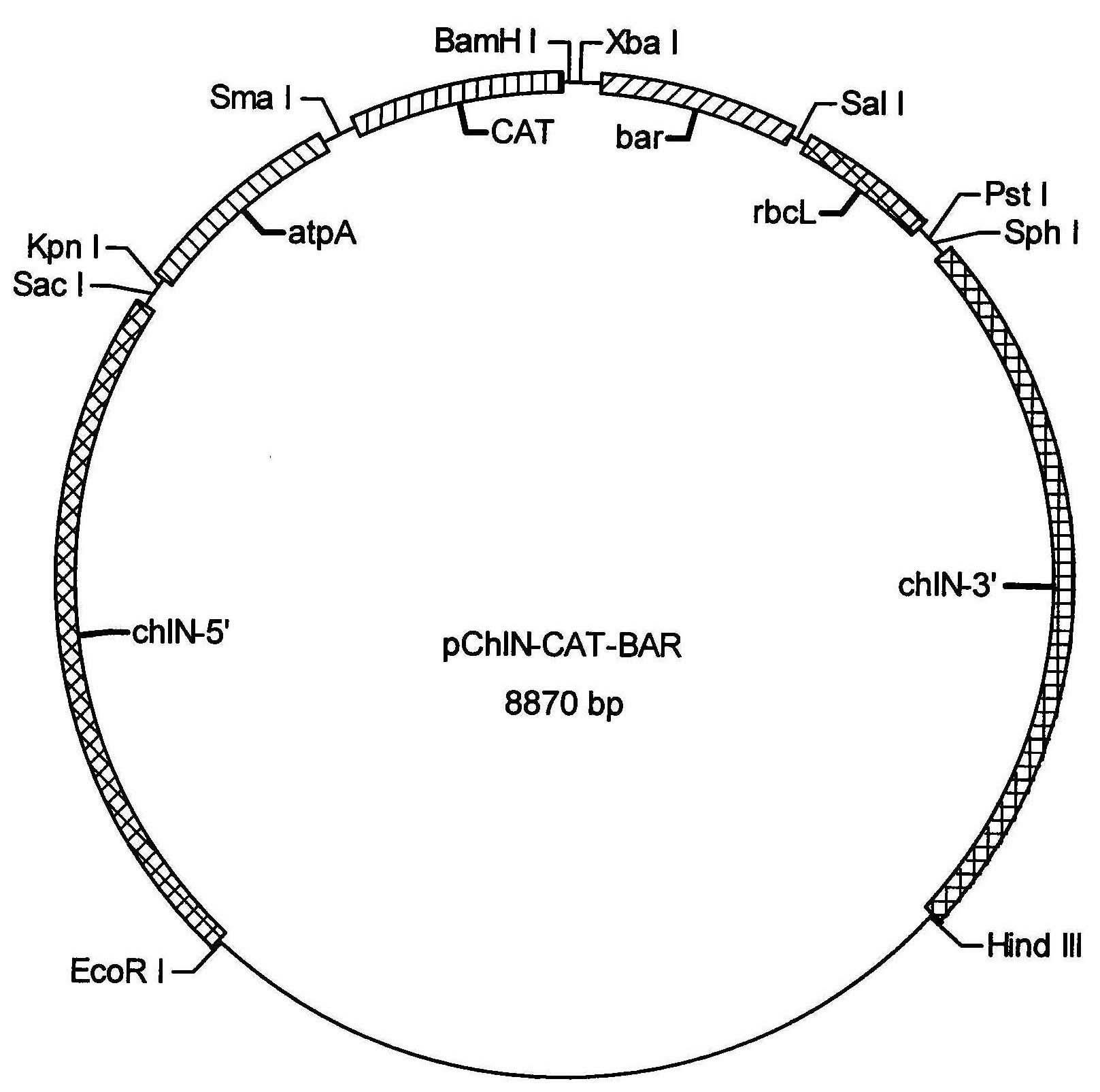Method for constructing Dunaliella salina chloroplast transformation vector
A Dunaliella salina and construction method technology, applied in the direction of introducing foreign genetic material using vectors, recombinant DNA technology, etc., can solve the problems of complex background, complicated operation steps, and low efficiency of exogenous gene expression, and achieve fast growth rate and convenient Homogenization, to achieve the effect of efficient expression
- Summary
- Abstract
- Description
- Claims
- Application Information
AI Technical Summary
Problems solved by technology
Method used
Image
Examples
Embodiment 1
[0026] Example 1. Cloning and vector construction of Dunaliella salina chloroplast light-independent protochlorophyllide reductase gene. The chlN gene is used as an example here, and the cloning and vector construction of homologous fragments of chlL and chlB genes are similar.
[0027] 1. Cultivation of Dunaliella salina
[0028] The medium formula is as follows: NaCl 58.5 g / L, MgCl 2 ·6H 2 O 15g / L, MgSO 4 ·7H 2 O 0.5 g / L, KCl 0.2 g / L, CaCl 2 0.151g / L, KNO 3 0.5 g / L, NaHCO 3 0.043 g / L, KH 2 PO 4 0.035 g / L, iron salt solution 10 mL / L, trace element solution 10 ml / L.
[0029] Iron salt solution formula: Na 2 EDTA·2H 2 O 209 mg / L, FeCl 3 ·H 2 O 244 mg / L. Trace element solution formula: H 3 BO 3 61 mg / L, (NH 4 ) 6 Mo 7 o 24 4H 2 O 38 mg / L, CuSO 4 ·5H 2 O 6 mg / L, CoC1 2 ·H 2 O 5.1 mg / L, ZnCl 2 4.1 mg / L, MnCl 2 ·H 2 O 4.1 mg / L, adjust the pH value to 7.5 with HCl, and sterilize at 0.11 MPa for 20 min.
[0030] The algae liquid was inoculated at a c...
Embodiment 2
[0047] Example 2. Cloning and vector construction of chloroplast promoter and terminator elements. Here, specific steps are illustrated by taking Chlamydomonas reinhardtii chloroplast atpA promoter and rbcL terminator elements as examples.
[0048] 1. Cultivation of Chlamydomonas reinhardtii
[0049] Chlamydomonas reinhardtii was grown in TAP (Tris-acetate-phosphate) liquid medium at 20-25°C with a light intensity of 3000 Lux and a light cycle of 12 h light / 12 h dark.
[0050] The formula of TAP liquid medium is as follows:
[0051] Tris base 2.42 g, Beijinercke buffer 5 ml, phosphate buffer 5 ml, trace element solution 1 ml, glacial acetic acid 1 ml, adjust the pH value to 6.8-7.3, add water to 1000 ml. 0.11 MPa sterilize for 20 min and set aside .
[0052] Beijinercke buffer recipe:
[0053] NH 4 Cl lO g ,MgSO 4 ·7H 2 O 4 g, CaCl 2 2H 2 0 2 g, add water to 1000 ml.
[0054]Phosphate Buffer Recipe:
[0055] K 2 HP0 4 ·3H 2 0 373 g, KH 2 P0 4 144 g, add water t...
Embodiment 3
[0074] Example 3. Cloning and Vector Construction of Double Selectable Marker Gene Sequence
[0075] 1. Chloramphenicol resistance selection marker gene chloramphenicol acetyltransferase (CAT) gene cloning
[0076] The chloramphenicol resistance selectable marker gene chloramphenicol acetyltransferase (CAT) gene was cloned on the plasmid vector pCAT3-Control (Promega, GenBank accession number: U57025.2), and the primers were designed as follows:
[0077] CAT1: 5'-GAATCCCGGGATGGAGAAAAAAATCACTGGA-3';
[0078] CAT2: 5′-ATAAGGATCCTTACGCCCCGCCCTGCCACTC-3′
[0079] Using the plasmid vector pCAT3-Control as a template, the CAT sequence was amplified by PCR; the PCR reaction conditions were 94°C for 30 s, 55°C for 45 s, and 72°C for 45 s, 25 cycles; the product was cloned into the pMD18-T vector, and the enzyme was selected Correctly identified clones were sequenced.
[0080] CAT gene sequence:
[0081] ATGGAGAAAAAAATCACTGGATATACCACCGTTGATATATCCCAATGGCATCGTAAAGAACATTTTGAGGCATTTC...
PUM
 Login to View More
Login to View More Abstract
Description
Claims
Application Information
 Login to View More
Login to View More - R&D
- Intellectual Property
- Life Sciences
- Materials
- Tech Scout
- Unparalleled Data Quality
- Higher Quality Content
- 60% Fewer Hallucinations
Browse by: Latest US Patents, China's latest patents, Technical Efficacy Thesaurus, Application Domain, Technology Topic, Popular Technical Reports.
© 2025 PatSnap. All rights reserved.Legal|Privacy policy|Modern Slavery Act Transparency Statement|Sitemap|About US| Contact US: help@patsnap.com


